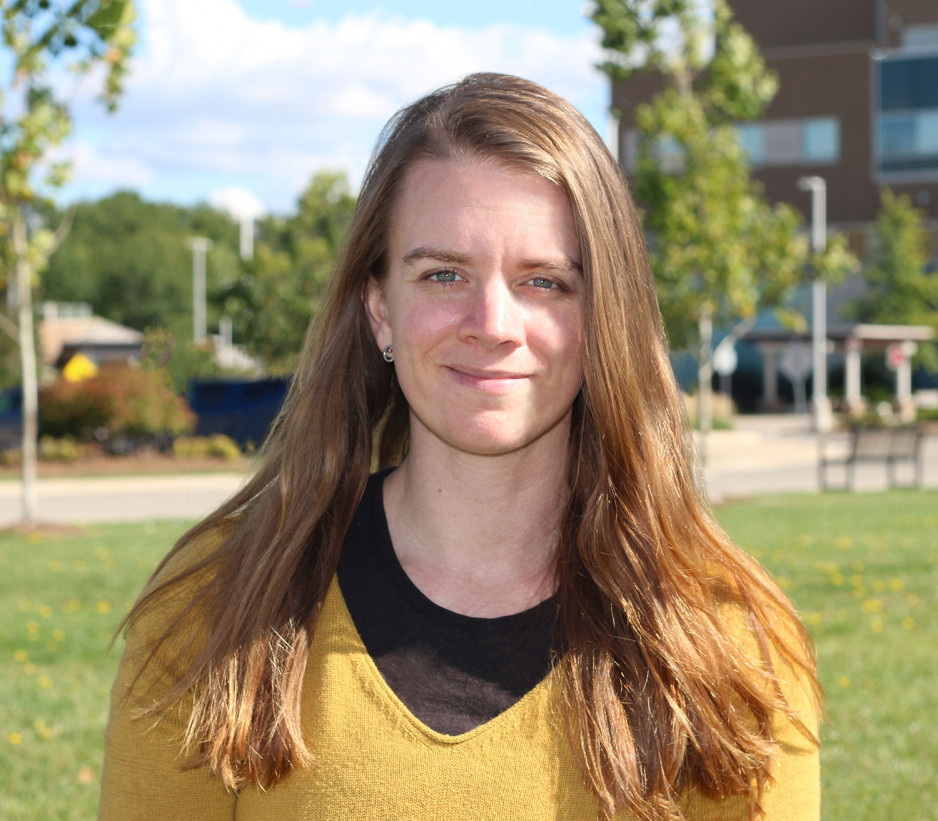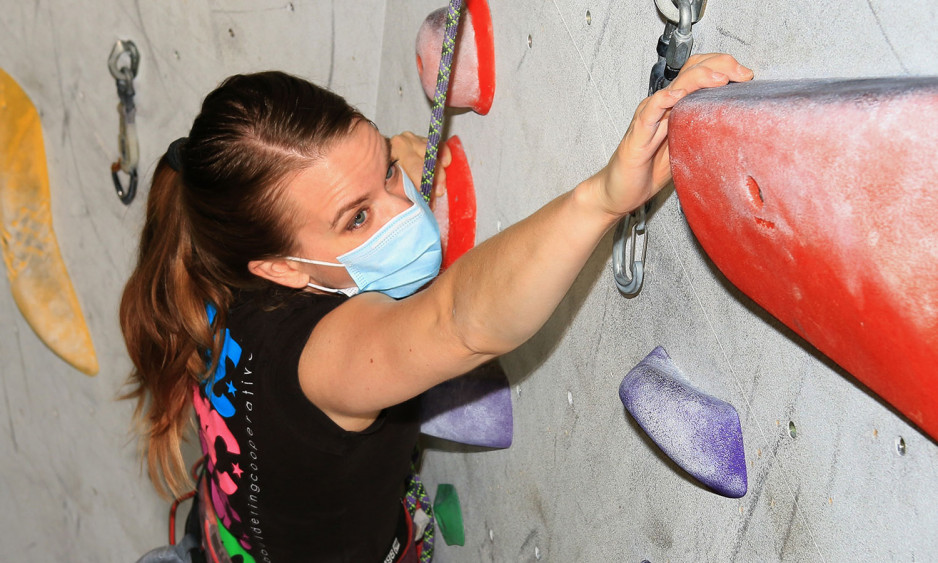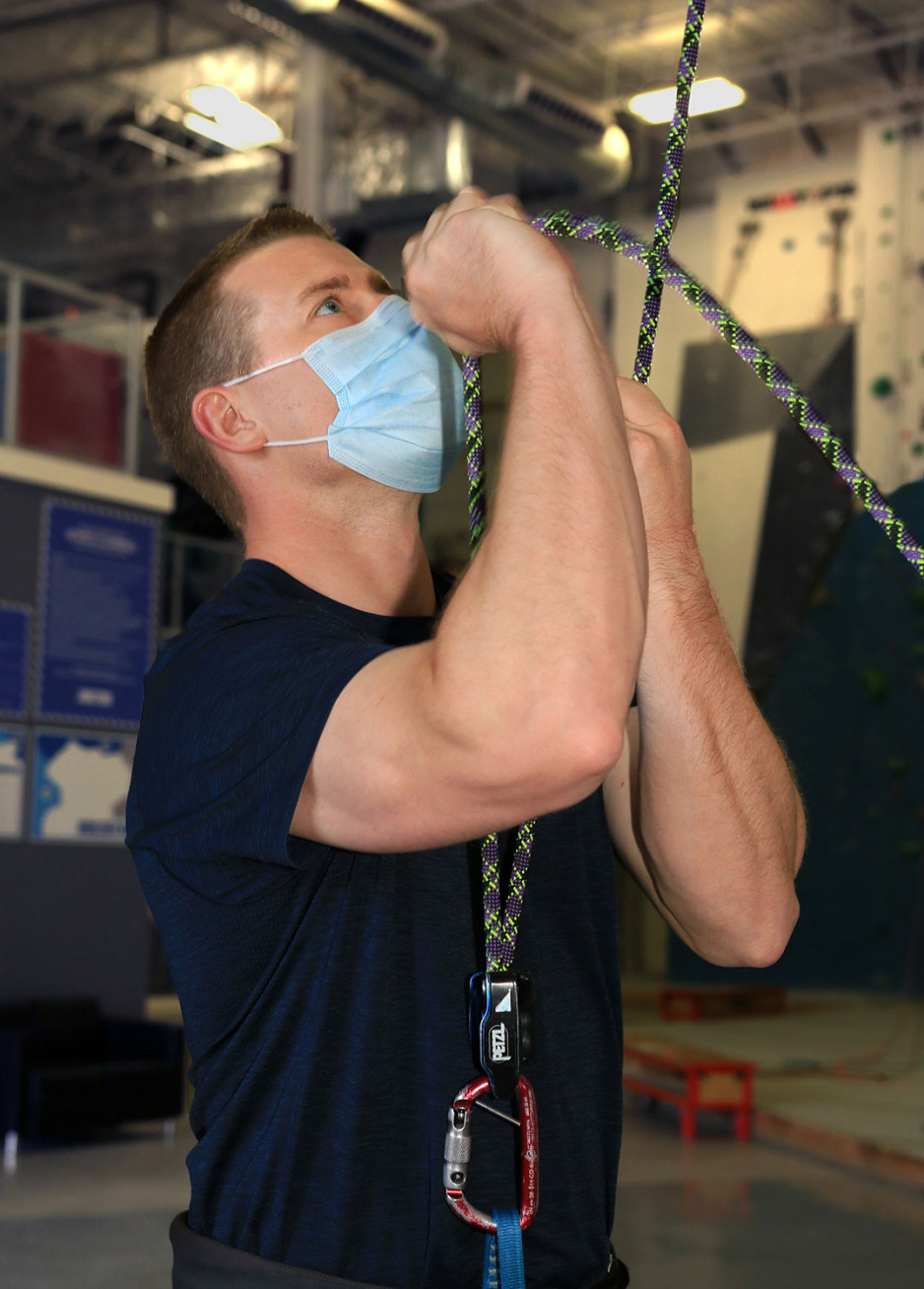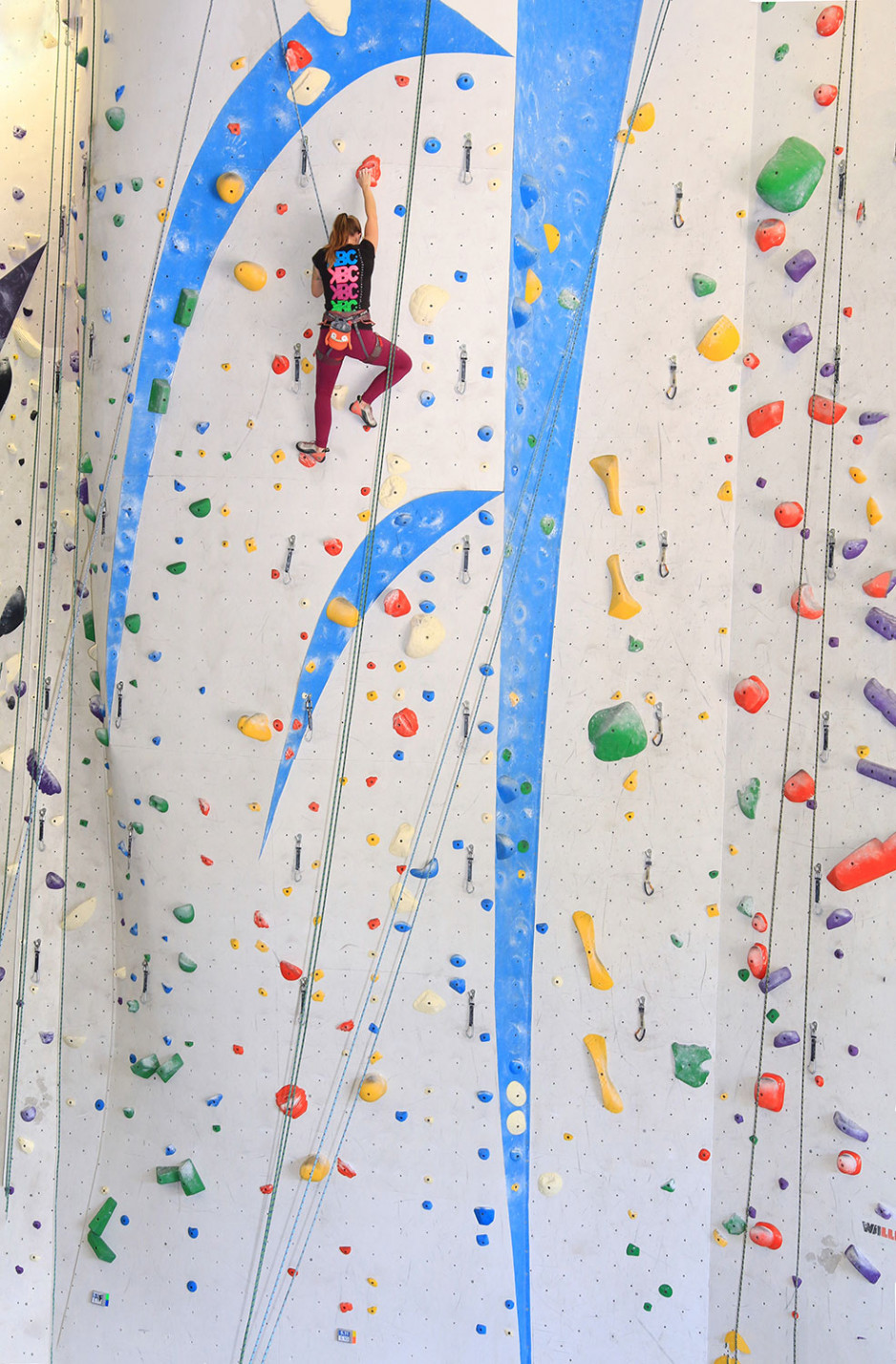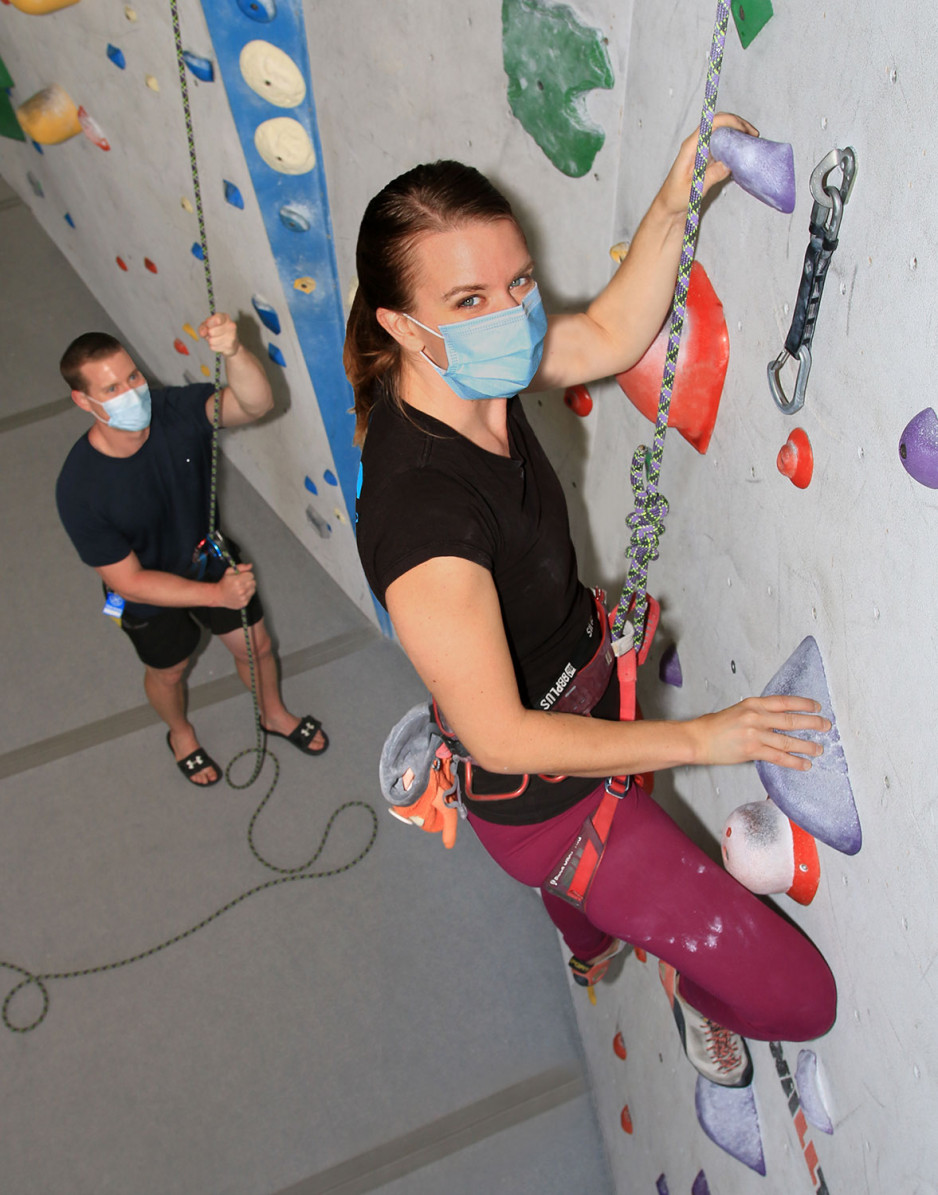A Little Fall to a Big Climb
Miranda Scott had big plans. She had just bought a house, was about to graduate from college for a second career, and was an avid rock climber, gardener and all-around exceptional athlete. It all ground to a halt when an accident in her home left her unable to walk.
"I was panicked, in pain, and my legs felt like they were floating..."
While practicing aerial aerobics, a sport using a suspended hoop, Miranda slipped, falling only three feet to the floor.
“It wasn't the height; it was the angle. I fell right on my neck,” says the fit 34-year-old. She sat on the floor stunned and confused, “I was panicked, in pain, and my legs felt like they were floating – though they were flat on the floor. I realized this may be serious.”
Taken by ambulance to hospital, Miranda thought perhaps she would be prescribed pain medication and the floating feeling in her legs would subside. That was not the case. She was told she had a broken neck.
“There was no prognosis. No one was willing to guess my future. I asked if I would walk again and I couldn’t get an answer.” The accident happened well into the third wave of COVID-19, adding complexity to Miranda’s situation with restrictions on family visits.
After two weeks of acute care, she was transferred to Parkwood Institute for rehabilitation.
Her short fall had resulted in a traumatic spinal cord injury with several fractured vertebrae. She had weakness throughout her upper and lower extremity muscles, and no voluntary movement in her left leg.
“It was a very sad time for me. Not only did I lose my active lifestyle but, due to the pandemic, I couldn’t see my family as much as I wanted to. It was depressing.” Admitted to the Spinal Cord Injury Rehabilitation Program at Parkwood Institute, Miranda had to adjust to being in a wheelchair, which was challenging for the active young woman. To transfer from bed to wheelchair, she needed a mechanical lift.
“Really all I could do myself was roll over in bed,” she says. “And even that was hard work.”
“I was brought into the hospital on a stretcher. I promised myself I would be walking out – and I did!"
Miranda told her clinicians her ultimate goal would be to return to some of the activities she enjoyed, including rock-climbing – something she fell in love with five years prior to the accident. Yet she kept herself in check, trying not to be too hopeful in case she never walked again.
Accepting whatever her body was willing to give her, she would try everything her physiotherapist, Neal McKinnon, proposed as part of her treatment.
“There was no point in NOT trying it,” Miranda recalls. “Eventually I started to see little gains.”
"It reminded me why I got into this profession."
“A big part of Miranda’s success was related to her motivation and work ethic,” remembers Neal. “During our initial assessment, she outlined that her goal was to be able to walk out the front door of the hospital when she was discharged. She was always motivated to push herself during therapy and try new activities.”
Miranda spent two months at Parkwood Institute as an inpatient. And looking back remembers the moment she could finally move her left leg on her own. Slowly and with tenacity Miranda worked toward more and more movement.
It was fortuitous that early on in her recovery Miranda and Neal discovered they were both die-hard rock climbers. As a matter of fact, Neal was a belay-certified rock climber, and member at a local indoor climbing gym called Junction Climbing Centre.
Due to COVID-19 the gym was closed to the public, but at that time the Ontario government allowed people with a disability to access gyms for the purpose of physiotherapy. Neal reached out to the owner of the gym and was able to work out a plan to get Miranda climbing. After spending a couple of sessions assessing her safety, Neal provided education and recommendations to the gym staff who continued to assist Miranda with her climbing therapy.
"When I was able to get back into the climbing gym for the first time, I felt complete joy."
“Climbing is my passion,” says Miranda. “My life changed when I started climbing and it was something I always looked forward to. It was never a task or errand. When I was able to get back into the climbing gym for the first time, I felt complete joy.”
Upon discharge from Parkwood Institute, she achieved her main goal. “I was brought into the hospital on a stretcher. I promised myself I would be walking out – and I did! My dad was waiting for me outside and I walked toward him and gave him a big hug. I was crying, my dad was crying. It was such a special moment.”
It was equally emotional for Neal. “It reminded me why I got into this profession.”
Miranda continues to climb two to three times each week and is also an outpatient with the Spinal Cord Injury Rehabilitation Program. Her left leg, she admits, has a way to go.
“It’s difficult to not compare myself to where I was before the accident. I can do pretty much everything I did before, but now it’s much more work. I use the analogy of a teapot. If you drop it and it breaks you can glue it back together and it still looks like a teapot – but it won’t work the same. I sometimes struggle with not being the same."
Still laser-focused on her recovery, Miranda continues to work through neuropathic pain and has set new goals – to complete a co-op position for school, graduate, build-up to taking her dog on two walks a day, and get back to hiking, more climbing and the other hobbies she once enjoyed. A task her physiotherapist thinks she is well equipped for. “Miranda would not have her independence taken away,” chuckles Neal. “She is very tough and determined. She sets her mind on an accomplishment – and then does it.”
